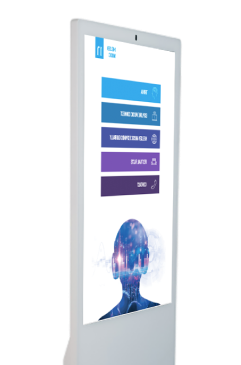

Event Solutions

Our Work

How to Measure Digital Display Signage ROI
Measuring ROI is simple enough when it comes to money, but what about gaging something a little less tangible, like calculating digital display signage ROI? A digital display signage system should be looked at more like marketing and promotion than straight costs vs. profits since the objectives aren’t essentially always about money, but about engagement. Today, there are methods for measuring marketing ROI. No matter which method a business uses, the goal is to get the uppermost return possible and to increase that ROI percentage over time. One way looks at gross returns vs. digital marketing budget, another uses Customer Lifetime Value (or CLV) in place of gross returns. This seems a little closer to what we might think about when considering digital signage ROI but still deals with revenue from sales. There are quantifiable costs to set up and maintain a digital display signage system:
- Hardware (screens, media players, etc.)
- Software (content management software, design applications, OS updates)
- Infrastructure (network, power, cabling)
- System training
- Content subscriptions
- External design services
- Support and maintenance contracts
- Labor for consulting, installation, etc.
Then there are the extra operational costs of paying staff to generate and schedule content, and generally, uphold the digital display signage system. That’s all stress-free enough to add up. But it’s very hard to assign dollar values to the outcomes of general communications that aren’t sales-focused. Many of the profits are intangible (brand loyalty, guest experience, worker morale, etc.), and give to other larger business elements (employee retention, guest satisfaction, etc.). So then, what is the “income” from digital signage? Instead of Return on Investment (an accounting standard), focus on detailed goals for individual communications or marketing campaigns by looking at the qualitative response, behavioral changes, and business outcomes. Borrow ideas that come from measuring internal communications, where specialists use SMART objectives, KPIs, and other apparatuses. Instead of ROI, a better term for this might be ROI. What has value here isn’t currency, but data. So, to measure digital display signage ROI, you need to have data that tells you:
- If individuals are “engaged”
- If they’re having a “good” experience
- If they’re “informed” or “entertained”
- If they’ll continue to use the digital signage system because they “feel” it’s valuable
If you don’t measure your digital signage in a clear, methodical way that’s tied to your general business goals and communication goals, you’ll then find yourself in a bad place. You’ve spent a lot of time and dough getting the system up, and continue to devote resources to design, content management, system updates, training, and the like, and all for unfamiliar reasons.